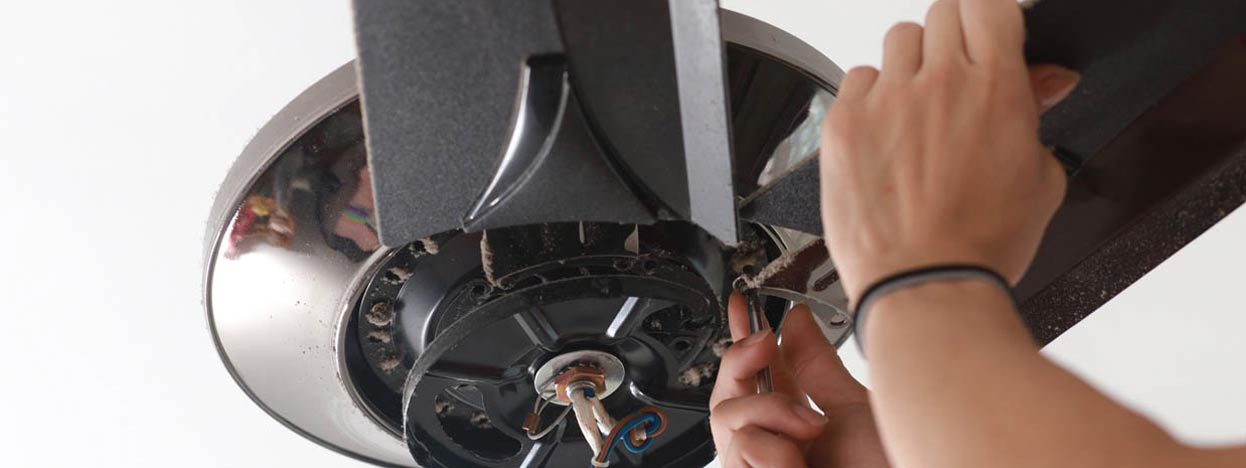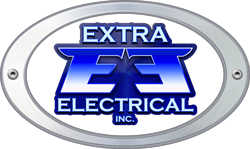- 8550 N 91st Ave building C Unit # 31 Peoria, AZ 85345
- info@extraelectrical.com
Working Hours:
Monday - Saturday
8:00 AM - 5:00 PM
Get In Touch:

Ceiling Fan Repairs
Expert Ceiling Fan Repairs in Phoenix and Maricopa County
A malfunctioning ceiling fan can disrupt airflow, increase energy bills, and create safety concerns. Whether it’s not turning on, wobbling, humming, or failing to control the light or speed, these issues often stem from faulty wiring, worn components, or improper installation. At Extra Electrical Inc., we provide fast, reliable ceiling fan repair services to restore proper operation and ensure long-term safety in homes and businesses across the Phoenix area.
“A ceiling fan should be quiet, balanced, and reliable. When it’s not, our team finds the issue and fixes it the right way—no shortcuts.”
— David Gomez, Owner, Extra Electrical Inc.
Why Ceiling Fan Repairs Matter for System Health
Ceiling fan problems are often signs of larger electrical issues. A no-power fan could point to faulty wall switch wiring or a tripped breaker. Wobbling may indicate mounting issues that could damage drywall or ceiling boxes. Humming or flickering lights often relate to voltage imbalances or loose connections. Timely ceiling fan repairs not only restore comfort but protect your electrical system and property from unnecessary wear or safety hazards.
Serving Homes & Businesses Across Phoenix with Precision Fan Repairs
At Extra Electrical Inc., we diagnose and repair all types of ceiling fan problems, including motors that don’t run, fans that only work on certain speeds, stuck light fixtures, and faulty remote or wall switch controls. We also correct installation errors, replace bad wiring, and rebalance unsteady blades.
We proudly serve Phoenix, Mesa, Chandler, Scottsdale, Glendale, and all Maricopa County communities. Whether your fan is in a living room, patio, office, or commercial space, our licensed electricians provide code-compliant, clean repairs backed by expert workmanship.
Going the Extra Mile to Keep Things Cool
Why Phoenix Residents Trust Extra Electrical for Ceiling Fan Repairs
“Going the Extra Mile” means we don’t just fix the symptom—we troubleshoot the full setup. From wiring to mounting brackets, we make sure your fan is safe, smooth, and ready for long-term use.
Why Choose Extra Electrical Inc.
- Licensed, bonded, and insured electricians
- Repairs for residential and commercial ceiling fans
- Troubleshooting for no-power, wobbling, and humming issues
- Light fixture and wall switch wiring correction
- Mounting and blade balancing services
- Service across Phoenix and Maricopa County
- Fast, clean work with upfront pricing
- Backed by a 2-year workmanship warranty
Ceiling Fan Repair FAQs
Why is my ceiling fan wobbling or shaking?
Wobbling is often due to loose blades, misaligned mounting brackets, or imbalanced weight. We diagnose and correct the issue for smooth operation.
What causes my ceiling fan to hum or buzz?
Humming may result from poor wiring, loose connections, or a failing motor. We inspect and isolate the source before making safe repairs.
My fan works, but the light fixture doesn't—can this be repaired?
Yes. We repair wiring issues, faulty light kits, and switch malfunctions that affect fan lighting.
Do you repair wall switch and remote wiring for ceiling fans?
Absolutely. We troubleshoot and repair control wiring, wall switches, and remotes to restore full fan and light functionality.



